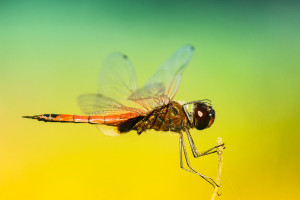A 40-10 rule for wealth and making a difference
With the recent earthquake/tsunamis it is hard to write about anything meaningful about selling Web services, and for sure our prayers go out to anyone touched by this disaster.
The closest tangent that comes to mind — appropriate or not — is how we spend the money we make from our business. In business school, a bunch of students made a pledge to stick to the 50-40-10 rule, which goes something like this:
Whatever you earn:
– Do your best to live on half, even if it means living simply and not “keeping up with the Jones.” Keep your expenses low.
– Save 40% for the future: emergencies, education, retirement, etc.
– Give 10% away to those less fortunate or causes that help them out.
It takes discipline and a sense of gratitude to follow this rule, especially as we get older and our expectations tend to rise. But it is worth consideration, as it could make a meaningful difference to yourself, your family, and those in need.
Is anyone successfully following this guideline, or something close? Please share.
Frequently Asked Questions about the 40/10 Rule for Wealth and Making a Difference
How does the 40/10 rule differ from the 50/20/30 budget rule?
The 40/10 rule is a financial strategy that encourages individuals to save 40% of their income and donate 10% to a cause they believe in. This rule is different from the 50/20/30 budget rule, which suggests that 50% of your income should go to needs, 20% to savings, and 30% to wants. The 40/10 rule places a greater emphasis on savings and philanthropy, while the 50/20/30 rule focuses more on balancing needs, wants, and savings.
Can the 40/10 rule be applied to any income level?
Yes, the 40/10 rule can be applied to any income level. The key is to adjust your lifestyle and expenses to fit within the 60% of your income that is not being saved or donated. This may require careful budgeting and prioritizing of expenses, but it is achievable with discipline and planning.
How can I start implementing the 40/10 rule in my life?
Start by analyzing your current income and expenses. Determine how much of your income is currently going towards savings and donations. If it’s less than 50%, consider ways to reduce your expenses or increase your income to meet the 40/10 rule. This may involve cutting back on non-essential expenses, seeking additional sources of income, or re-evaluating your financial priorities.
What are the benefits of following the 40/10 rule?
The 40/10 rule can help you build substantial savings over time, providing financial security for the future. It also encourages philanthropy, allowing you to make a positive impact in your community or cause of choice. Additionally, by living within 60% of your income, you can reduce financial stress and live a more balanced lifestyle.
Is the 40/10 rule a proven method for wealth accumulation?
While the 40/10 rule is not a guaranteed path to wealth, it is a sound financial strategy that encourages saving and giving. By consistently saving a significant portion of your income and living within your means, you can accumulate wealth over time. The key is consistency and discipline in following the rule.
How does the 40/10 rule promote making a difference?
The 40/10 rule encourages individuals to donate 10% of their income to a cause they believe in. This act of giving not only benefits the recipient organization but also fosters a sense of purpose and fulfillment in the giver. It’s a way of using your financial resources to make a positive impact in the world.
Can the 40/10 rule help me achieve financial independence?
Yes, by saving 40% of your income, you are significantly increasing your chances of achieving financial independence. This high savings rate allows you to build a substantial nest egg that can provide income in the future, reducing your dependence on a regular paycheck.
What if I can’t save 40% of my income?
If saving 40% of your income is not feasible, aim to save as much as you can. Even a small percentage saved consistently can add up over time. The key is to start saving, no matter how small the amount, and gradually increase your savings rate as your financial situation improves.
How can I track my progress with the 40/10 rule?
You can track your progress by regularly reviewing your income, expenses, savings, and donations. There are many budgeting apps and tools available that can help you keep track of your finances and see how well you are adhering to the 40/10 rule.
Can the 40/10 rule help me with debt repayment?
Yes, the savings portion of the 40/10 rule can be used towards debt repayment. By saving a significant portion of your income, you can accelerate your debt repayment and reduce the amount of interest you pay over time. Once your debts are paid off, you can continue to save this portion of your income, further increasing your wealth accumulation.


